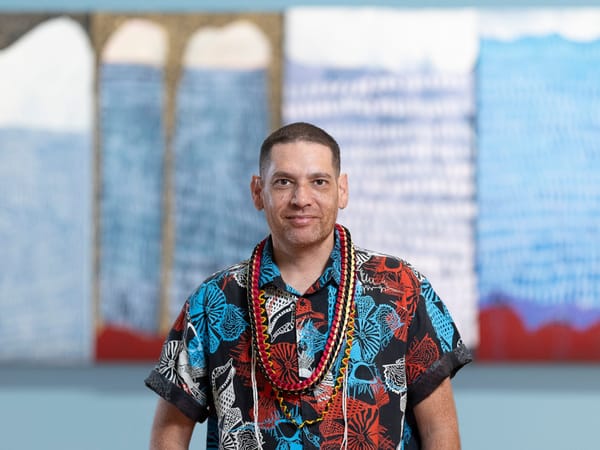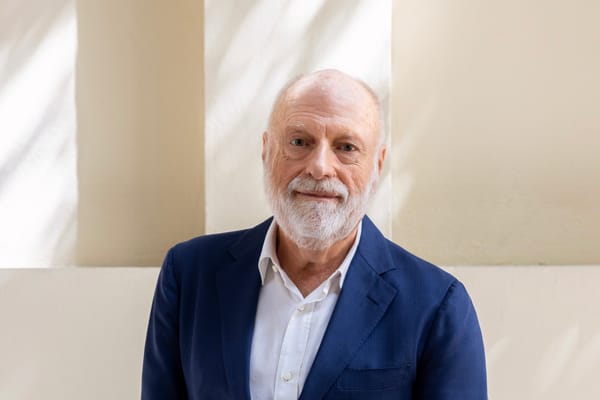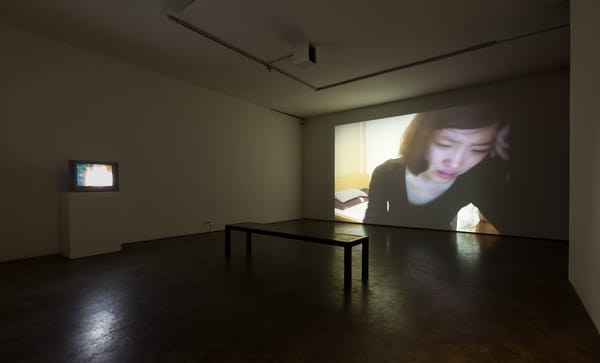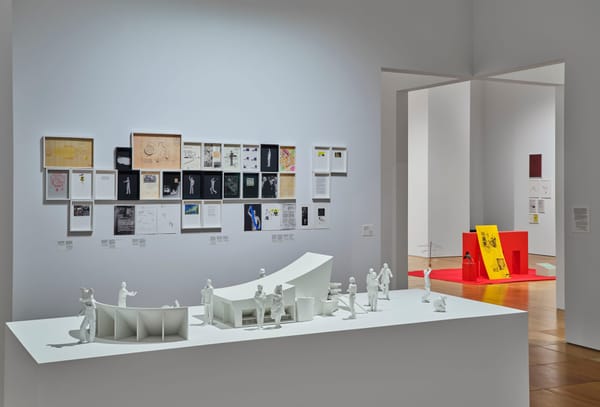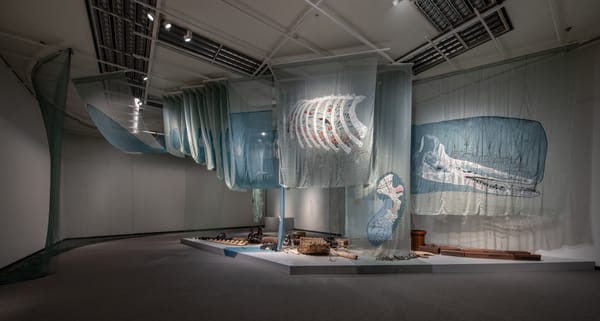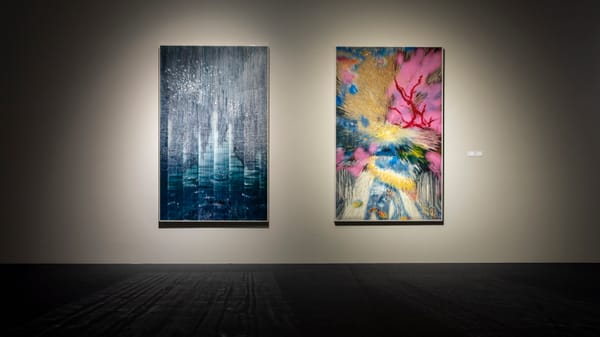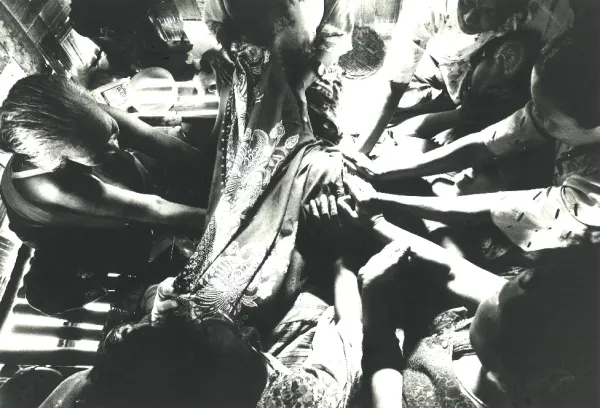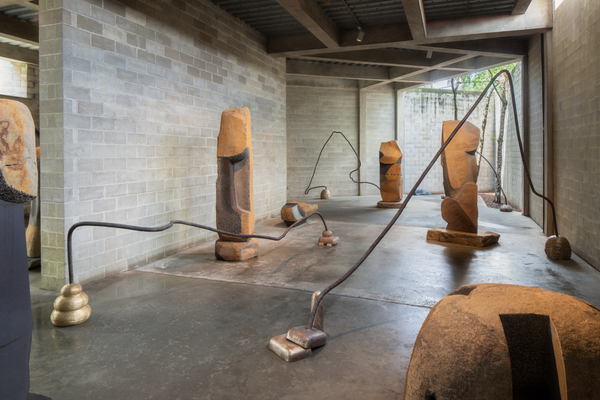Shows
“Tidal Weavers: Islands Exchange” at CHAT
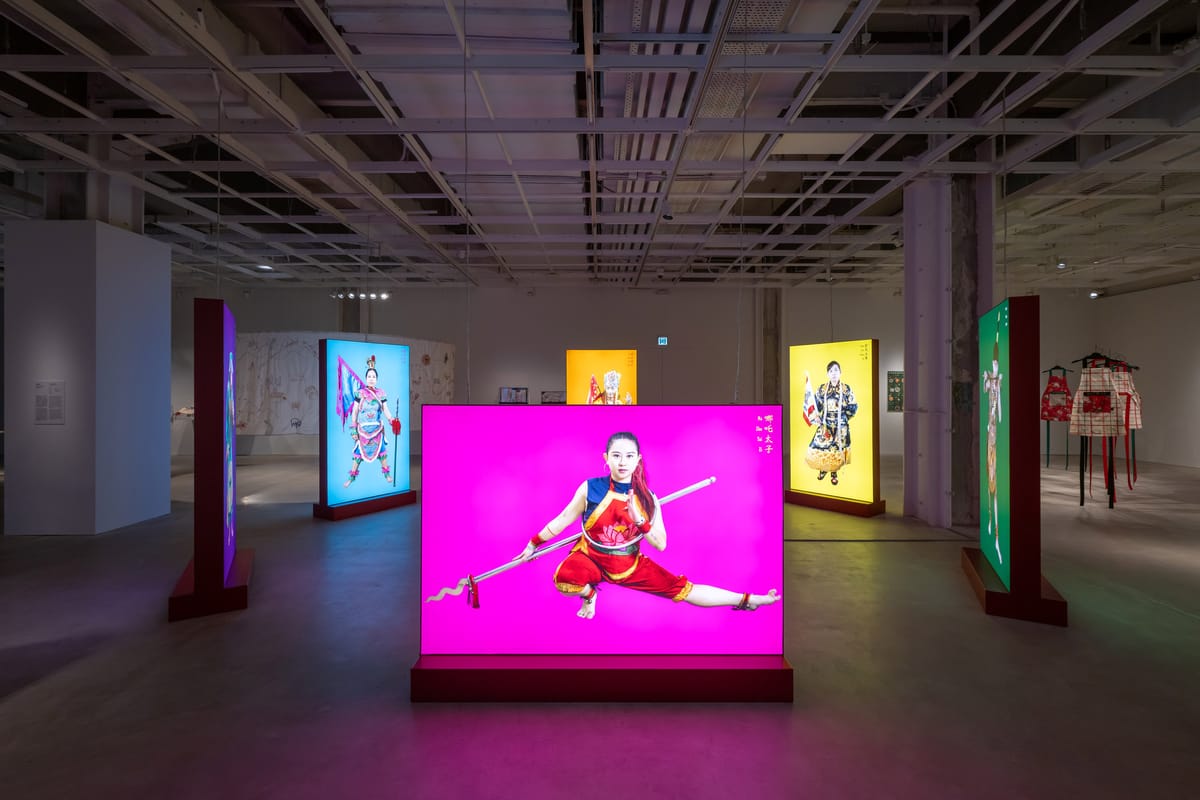
Tidal Weavers: Islands Exchange
Centre for Heritage, Arts and Textile (CHAT)
Hong Kong
Aug 2–Oct 26
Stepping into “Tidal Weavers: Islands Exchange” was like entering a village bazaar in which kaleidoscopic sights and cacophonic sounds converge. The group exhibition was built on reciprocal artist exchanges lasting four to eight weeks between grassroots organizations across Hong Kong, Indonesia, Taiwan, and the Philippines. A map at the entrance traced these exchanges, evoking historic maritime trade systems and diasporas. Curated by Ade Darmawan, the show presented a south-to-south, ground-up dialogue that gave artists the time and space to reclaim ancient networks and become acquainted with island neighbors across the sea.
During his residency with art collective Susur Galur in Pontianak, West Kalimantan, Yip Kai Chun, a Hong Kong artist of Hakka descent, documented the tatung festival that marks the end of the Chinese new year. In My Deity Wants Me to Wear This (2025), Yip captures the raucous procession on a video screen embedded in a red podium on the floor, detailing how spirit mediums embody Chinese deities who give them superpowers. The life size, brightly colored photographic portraits of the six mediums take shape in lightboxes that stand in a circle facing the screen, resembling guardian statues coming to life. The work showcases the syncretic folk rituals that have taken on wild forms among the overseas Chinese diaspora, evoking both familiarity and awe.
To know one’s neighbor, one must first ask, “Who are your neighbors?” The exhibition reorientated the audience’s gaze from East Asia to the Southeast, toward their nanyang (Southern Seas) neighbors. During her residency with the Indigenous Kebalan community in Hualien, Taiwan, Meita Meilita organized an embroidery workshop with Kebalan-speaking elders. The group made a sprawling three-meter hanging embroidery depicting everyday concepts like “rain,” “mountain,” and “eye” in images and Latin script, explicating the shared roots between Indonesian and endangered Kebalan languages while reinvigorating the cognitive flow between language and imagery as a bulwark against erasure and sinicization.
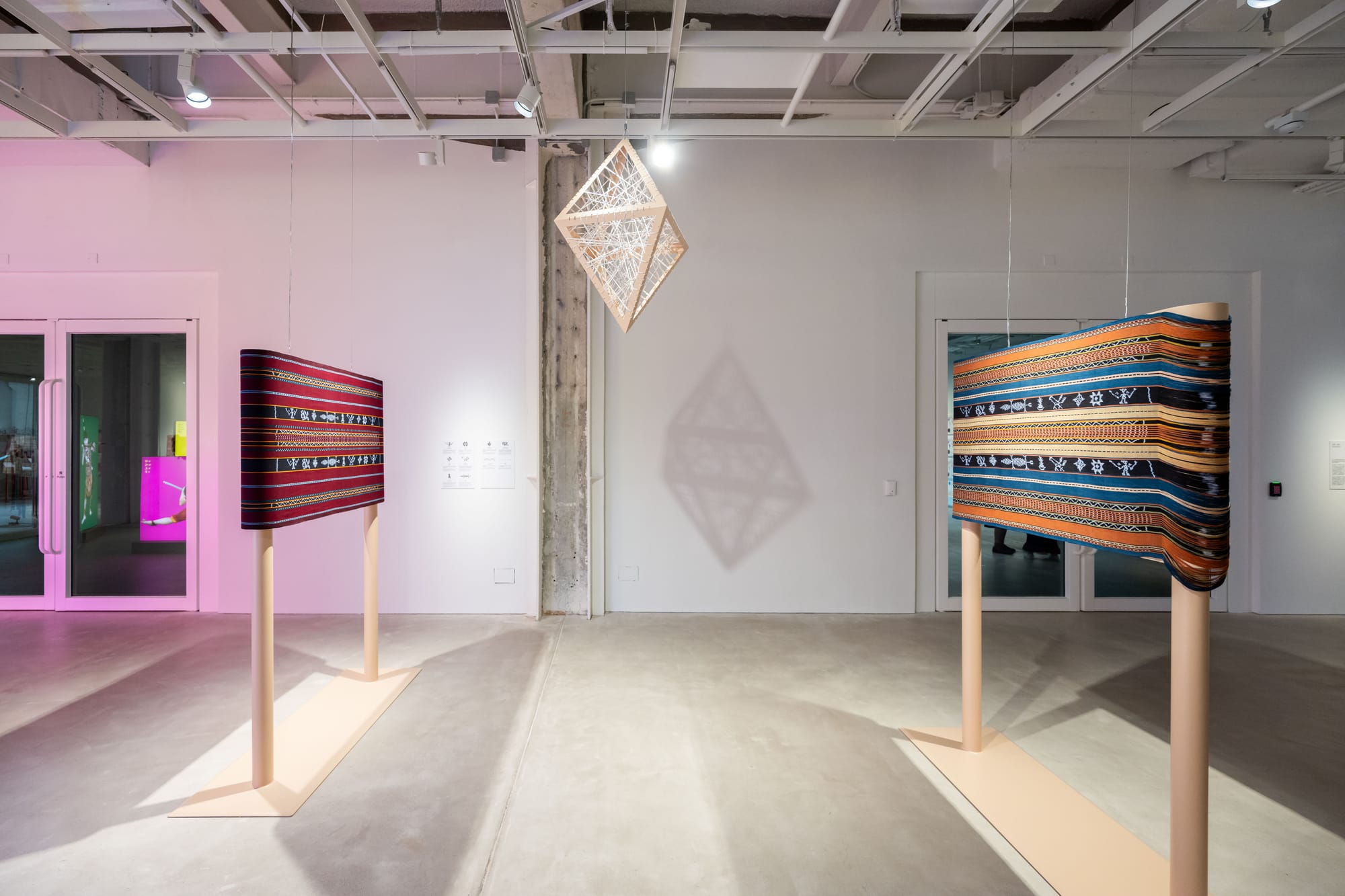
Language also played a role in Taiwanese artist Chang En-Man’s The Great Deluge: Oral History from Pacavalj (2024), a work realized in collaboration with the art collective Riwanua in Makassar, Sulawesi. Chang embroidered the Taiwanese Paiwan flood myth on a scroll, leaving space for Riwanua to add the Buginese epic La Galigo. Beyond text, these conversations have led to the invention of new textile motifs, as shown in Ma Wing Man Mandy’s Where Moments Gather (2025). Under the tutelage of Mama Lin and her community in Komunitas KAHE in Maumere on Flores Island, Ma learned the traditional ikat technique, crafting the new “flying chicken” and “dancing people” motifs to narrate her residency experience.
The exhibition also urged us to consider our neighbors in Hong Kong. During her residency at V54, Bandung-based artist Widi Asari focused on Indonesian domestic workers living under the same roof as their employers in the city. Through interviews and workshops, Asari invited these migrant workers to illustrate the food they discovered, cooked, and missed most while working in Hong Kong. She then printed these drawings onto brightly patterned aprons made from deadstock floral fabrics sourced from Sham Shui Po.
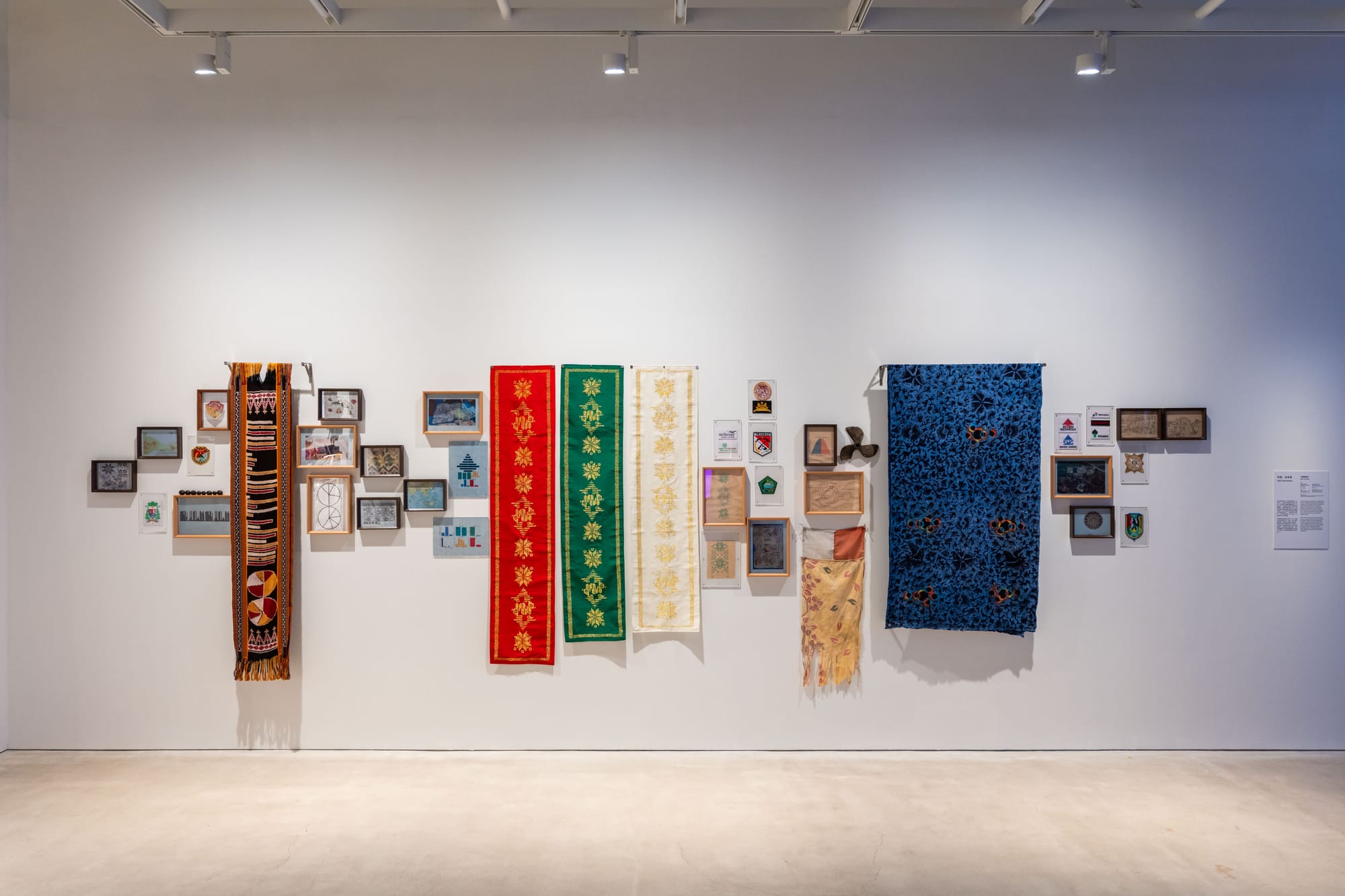
Can textiles escape the colonial legacy of “primitive art,” where the traditions of the Global South are seen as the only means to engage in contemporary art? Ade Darmawan’s Data Threads (2025) proved otherwise. Through three large vibrant tapestries and a salon-style hang of photographs, logos, maps, diagrams, and sketches, Darmawan juxtaposes the customs and weaving practices of coastal and riverine communities of Maumere, Sambas, and Tuban (who also hosted the Hong Kong and Taiwanese artists’ residencies) with statistical data about everyday lives as well as references to extractive industries driven by municipal governments and national conglomerates.
From Hong Kong to Indonesia, Taiwan to the Philippines, the “Tidal Weavers: Islands Exchange” residencies and exhibition ran parallel to the archipelagic logic of Indonesia’s nation-building project of unity in diversity. It inspired us to reinscribe Indonesia’s archipelagic logic across Asia, and to reimagine an Asian water-based identity rooted in oceanic and fluvial livelihoods, relationality, and ways of being.
Nick Yu is an independent curator and writer based in Hong Kong. Together with Junko Asano, the research and curatorial duo is the recipient of the CHAT 2025 Research Grant.
